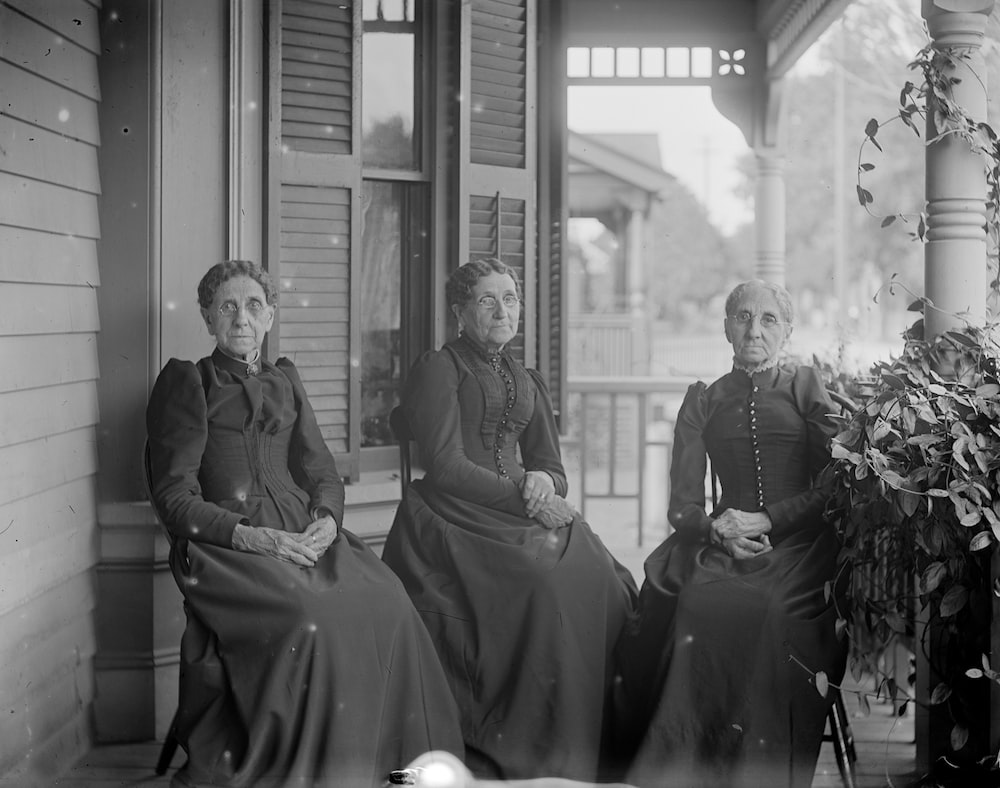
DNA inheritance in genealogy refers to the process by which genetic information is passed down from one generation to the next, providing valuable insights into a person’s ancestry and family history.
Every individual inherits their DNA from their biological parents, and this genetic material carries a unique combination of traits, characteristics, and ancestral markers.
In genealogical research, the focus is often on three types of DNA inheritance:
Autosomal DNA (atDNA)
Inherited from both parents, autosomal DNA contains a mix of genetic material from various ancestors. It is the most commonly tested type of DNA for genealogical purposes, providing information about recent generations.
YChromosomal DNA (YDNA)
Inherited along the paternal line, this type of DNA is passed from father to son. YDNA testing is particularly useful for tracing direct paternal ancestry and identifying shared paternal lineages among individuals.
Mitochondrial DNA (mtDNA)
Inherited maternally, mtDNA is passed from mother to both sons and daughters, but only daughters pass it on to the next generation. mtDNA testing helps trace direct maternal ancestry.
By analyzing DNA test results, genealogists can identify shared genetic markers with relatives, estimate relationships, and uncover ancestral migrations. Understanding DNA inheritance enhances traditional genealogical research methods, helping individuals build more accurate and detailed family trees.
What Are Maternal and Paternal Lines Exactly, and Why Do They Matter in Genealogical Research

Maternal and paternal lines refer to the direct ancestral lines that can be traced through a person’s mother (maternal) and father (paternal), respectively. Understanding these lines is crucial in genealogy for several reasons:
Tracing Lineages
Maternal and paternal lines allow genealogists to trace specific family lines back through generations. By following either the maternal or paternal side exclusively, researchers can create a focused and detailed lineage.
Inheritance Patterns
Different types of DNA are inherited through these lines. YChromosomal DNA (YDNA) is passed along the paternal line, providing insights into direct paternal ancestry. Mitochondrial DNA (mtDNA), on the other hand, is passed along the maternal line, offering information about direct maternal ancestry.
DNA Testing
Maternal and paternal lines are crucial in DNA testing for genealogy. Testing specific types of DNA, like YDNA for paternal and mtDNA for maternal, helps individuals trace and confirm ancestral connections on these lines.
Surname Traditions
Paternal lines often follow the tradition of passing down surnames from father to son. This can be valuable for tracking family names through generations.
Genetic Genealogy
The study of maternal and paternal lines through genetic genealogy has become increasingly popular. DNA testing, combined with traditional genealogical research, helps individuals understand their ancestral origins, migrations, and connections.
In essence, understanding maternal and paternal lines is fundamental to constructing a comprehensive family tree, providing a clearer picture of one’s heritage and facilitating connections with relatives along specific ancestral lines.
The Inheritance Patterns of Autosomal DNA

Autosomal DNA, found in the 22 pairs of nonsex chromosomes, is inherited from both parents and follows specific patterns. Here are key aspects of autosomal DNA inheritance:
Equal Contribution
Each person inherits approximately 50% of their autosomal DNA from their biological mother and 50% from their biological father.
Random Assortment
During the formation of eggs and sperm (meiosis), the chromosomes undergo a process called recombination, shuffling genetic material. As a result, siblings inherit different combinations of DNA from their parents.
Generational Dilution
With each generation, the contribution of a specific ancestor’s DNA is diluted. While you inherit 50% from each parent, your children inherit approximately 25% from each of their grandparents.
Variability Among Siblings
Siblings may share around 50% of their autosomal DNA, but the actual shared percentage can vary. This is due to the random assortment of chromosomes during meiosis.
Recombination Points
Recombination introduces variability, creating points on chromosomes where genetic material from each parent is exchanged. These recombination points contribute to the uniqueness of an individual’s autosomal DNA.
Identifying Relationships
Autosomal DNA is used in genetic genealogy to identify relationships between individuals. Shared segments of autosomal DNA can indicate a common ancestor.
Segments and CentiMorgans
Shared segments of DNA are measured in centiMorgans (cM), representing the length of a segment and helping determine the likely degree of relationship.
Chromosome Mapping
Chromosome mapping involves identifying which segments of DNA come from which ancestors. This can help genealogists trace specific lines in their family tree.
Ethnicity Estimation
Autosomal DNA testing is often used for ethnicity estimation, providing insights into an individual’s genetic ancestry.
Genetic Genealogy Applications
Companies offering autosomal DNA testing provide tools for connecting with relatives, building family trees, and exploring one’s genealogy.
Understanding autosomal DNA inheritance patterns is fundamental to leveraging DNA testing for genealogical research. It enables individuals to explore their family history, discover relatives, and gain insights into their ancestral roots.
How Can DNA Testing Be Leveraged for Genealogical Breakthroughs

Leveraging DNA testing for genealogical breakthroughs involves utilizing genetic information to overcome genealogical challenges and make discoveries about one’s ancestry. Here are several ways DNA testing can be instrumental in genealogical breakthroughs:
Confirming Relationships
DNA testing can confirm or establish relationships, especially when traditional records are lacking or ambiguous.
Breaking Brick Walls
In cases where traditional research hits a dead end (brick wall), DNA testing can provide clues or connections that lead to new information.
Identifying Biological Family
Adoptees or individuals with unknown parentage can use DNA testing to identify biological family members and uncover their roots.
Surname Projects
YDNA testing, which traces the paternal line, can be part of surname projects where individuals with the same surname collaborate to find common ancestry.
Ethnicity Estimation
DNA testing companies provide ethnicity estimates, offering insights into one’s genetic makeup and potential ancestral origins.
Cousin Matching
Autosomal DNA testing enables individuals to connect with distant relatives, potentially leading to the discovery of shared ancestors.
Genetic Genealogy Databases
Contributing DNA data to genealogy databases can expand the pool of potential matches and increase the chances of finding relatives.
Forensic Genealogy
DNA databases are increasingly used in forensic genealogy to solve cold cases or identify unknown individuals.
Migration Patterns
By analyzing specific markers or segments, DNA testing can provide information about ancestral migration patterns.
YDNA and mtDNA Lineage Tracing
YDNA testing traces the direct paternal line, while mtDNA testing traces the direct maternal line, providing insights into deep ancestral roots.
Chromosome Mapping
Chromosome mapping involves identifying which segments of DNA come from specific ancestors, aiding in the reconstruction of family trees.
Surname Changes
DNA testing can help individuals explore the possibility of surname changes or variations, providing additional avenues for research.
By combining DNA testing with traditional genealogical research, individuals can overcome obstacles, validate relationships, and uncover new branches in their family tree. It’s a powerful tool for enhancing and complementing the richness of genealogical exploration.
If you’d like to learn more about this, reach out to us at DavisDNA And Family Research. We offer traditional genealogy services and can help with expert DNA research assistance.
